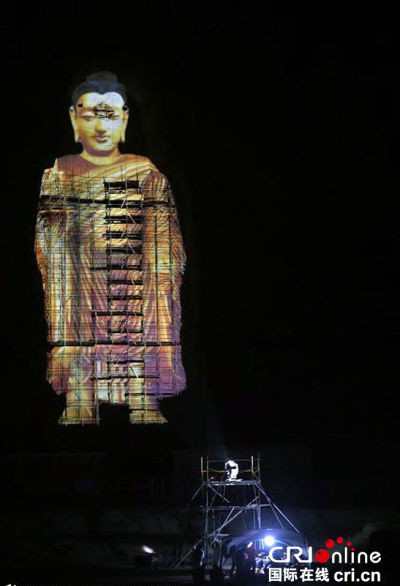 |
|
The Chinese couple, Zhang Xinyu and Liang Hong, has successfully projected the image of the tallest Buddha in Bamyan Valley. [Photo/CRI] |
After projecting the image of Buddha, the couple donated the image projection equipment, worth 100,000 U.S. dollars, to the local government so that they can perform similar shows in the future.
The two giant Buddhas were bombed and smashed to the ground by Taliban in 2001 despite appeals from the international community.
After the collapse of the Taliban in late 2001, the Afghan government, with the assistance of international groups, started a massive reconstruction process at the site to attract local and foreign visitors.
The eight cultural relics in the Bamyan Valley, including the giant Buddhas and Shahr-e-Ghulghula or "Screaming City," have been jointly listed as world's cultural heritage by the UNESCO in 2003.
However, foreign nationals rarely visit this tourist destination any more mainly for security concerns and partly due to the lack of tourism facilities.
Bamyan is rich in tourist attractions. Aside from the cultural relics, Afghanistan's only national park of Band-e-Amir is also located in this central province.
Like other economic sectors in the country, the tourism industry has been badly damaged due to the ongoing protracted war and civil conflicts.
Unofficial sources said that if fully developed, the tourism industry in Afghanistan can bring in up to five billion U.S. dollars in revenues every year. But the government must first ensure the security and safety of the places foreign tourists would visit before the tourism industry can be revived.